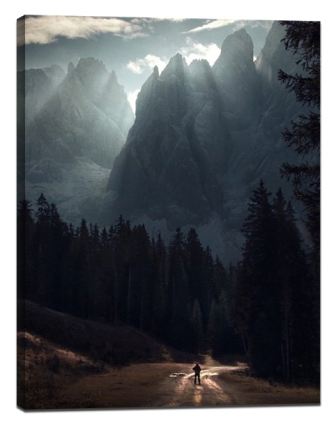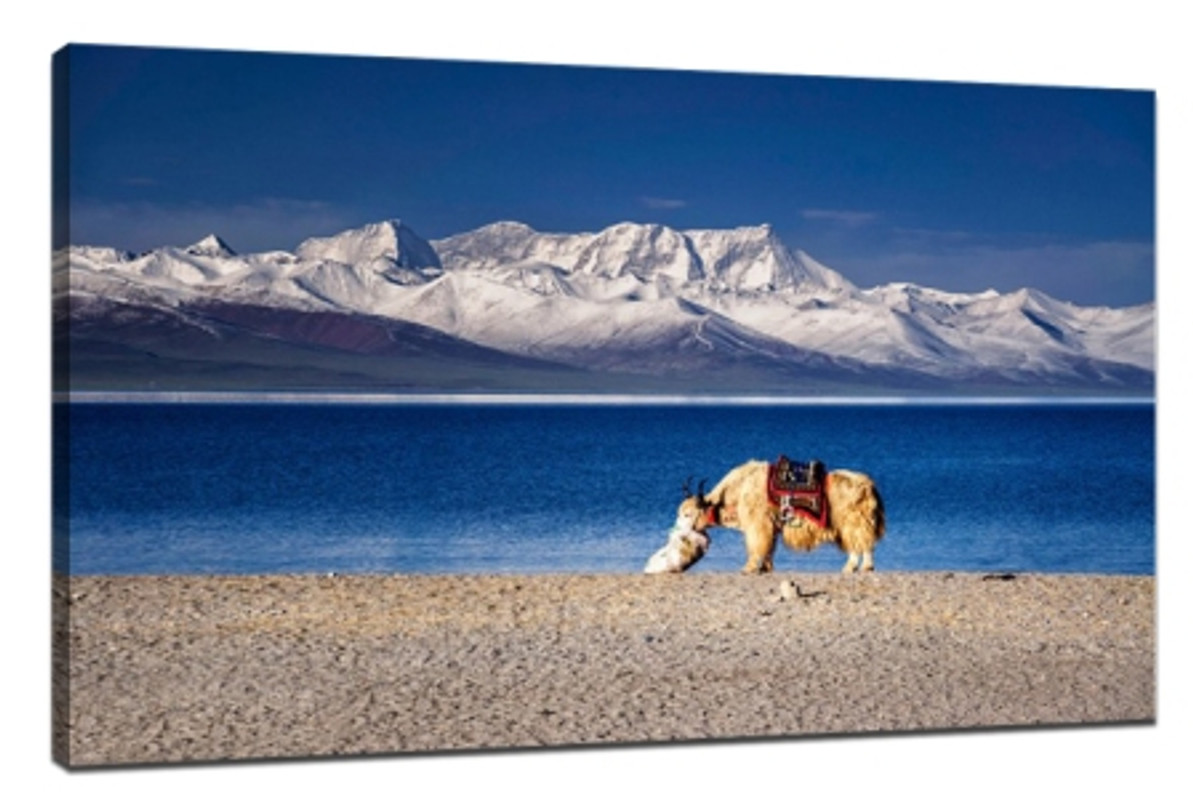Take good pictures with contrast
Take good pictures with contrast
A good novel or movie is full of ups and downs and twists. Similarly, canvas prints a good photograph usually contains all kinds of contrast and conflict. Without formal contrast, the picture lacks interest points to attract viewers, which makes the picture boring. Without the conflict of connotation, it is difficult to arouse the reader's thinking and make people forget it immediately.
1. Comparison of form and connotation
When we refer to contrast and conflict, we actually refer to two situations, one is the contrast in form, that is, on the picture, such as size, light and shade, photo canvas prints cold and warm, etc. The other is the contrast in connotation, such as war and peace, man and nature, sorrow and joy.
The formal contrast makes the picture full of expressive force and attracts readers' attention.
For example, in the following photo taken by landscape photographer Max Rive, the cool and dark colors on the left of the picture are in sharp contrast with the warm and bright colors on the right. The bright, dark, cold and warm conflicts in the picture not only show a magnificent panorama, but also firmly grasp the reader's eyeball, making people amazed. The contrast in connotation makes the picture full of dramatic tension, causing viewers to think.
Many good pictures are both. For example, in Max Rive's classic work, the form conflicts between warm and cold, bright and dark in the picture and the size greatly improve the expression of the picture. The contrast between human and nature has strengthened the shocking degree of photographs.
2. Common contrast in photos
In the early stage of composition and post-processing, if we find and strengthen various comparisons in the picture, the performance of the photo can be greatly enhanced. It's easy to find comparisons by looking for antonyms in photos. Formal antonyms are bright and dark, cold and warm, big and small, static and static, black and white, soft and hard, clear and hard, how many, square and so on. There are more antonyms or comparative words in connotation, ancient and modern, artificial and natural, confusion and hope

3.Refine the contrast in your life
Life is full of contrasts, and one of the purposes of our early composition is to refine these interesting contrasts. At the later stage, we also need to further strengthen and show the conflict in the picture by means of deepening the dilution and adjusting the color.
So I used the long focal length, focused the image on the boat and the volcano, and used the small size of the boat to highlight the height of the volcano in the background. At the same time, the details of the mountain and forest were dimmed in the later stage, which only highlighted the brightness of the snow and clouds on the boat and the top of the mountain, and highlighted the main body with the contrast of light and darkness.
And I ended up using diagonals, where I photographed two spiders at the same height, one up and one down.
The spider above, with its teeth and claws, seemed ready to attack. Below the spiders, in formation, seemed ready to defend themselves. As soon as you go up, attack and defend, there are some conflicts and contrasts in the picture, which makes it more interesting.
Conclusion:
A good photograph usually contains all kinds of contrast and conflict.
2. Contrast and conflict, one is the contrast in form, that is, on the picture, such as size, brightness, cold and warm. The other is the contrast in connotation, such as war and peace, man and nature, sorrow and joy. Comparison and conflict are everywhere in life. Finding conflicts, zebra painting art prints refining conflicts and expressing conflicts is one of the secrets of taking good pictures.
Recent Posts
-
What is rolled canvas prints
In the realm of interior decor and artistic expression, canvas prints have emerged as a popular medi …10th Apr 2024 -
The benefits of printing family photos on canvas
In an age dominated by digital screens and fleeting images, the value of printed photographs cannot …7th Apr 2024 -
The best ways to use canvas prints for home decor
In recent years, canvas prints have emerged as a popular choice for home decor, adding style, person …3rd Apr 2024
